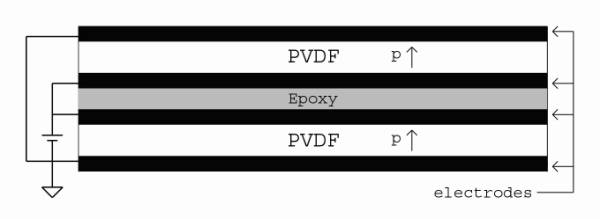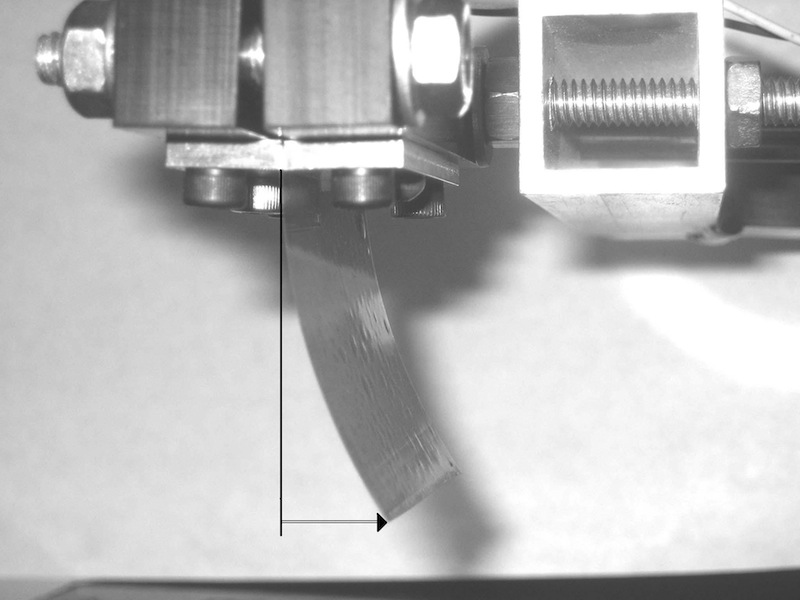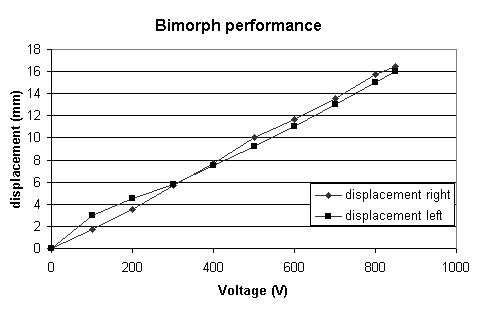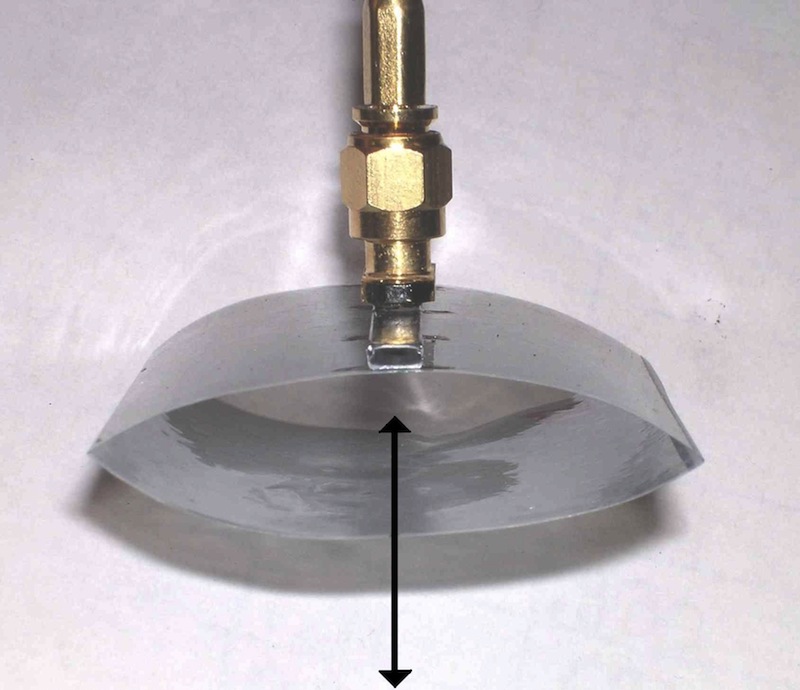Bimorphs and Actuators

Single sheets of PVDF don't have very large displacements when voltages are applied, so other things such as bimorphs and actuators are created with them. Bimorphs are composed of two sheets of PVDF securely glues together and there are two different ways to do so.
The first is to have electrodes on both sides of the sheets. Then the sheets are glued together with their poled directions in the same direction as seen below. Equal but opposite electric fields are then applied to the two sheets. One of the sheets shrinks in length and the other expands causing the bimorph to bend.

This is the way we previously made bimorphs when the PVDF had silver electrodes. We no longer use this method because the epoxy we used to glue the sheets together dissolves the deposited PEDOT electrodes on the inner sides of the PVDF. The second way to create bimorphs is to put electrodes on just one side of the PVDF sheet and glue them so that the poled directions are in the opposite direction. The electrodes are on the outer sides of the bimorph and the electric field is applied across the entire as seen below.
When an electric field is applied across a bimorph one of the PVDF sheets expands while the other shrinks causing the bimorph to bend, below. In the picture the deflection of a bimorph is represented by the arrow.

The deflection distance can be measure to determine the performance of the bimorph. Some results are shown below for DC voltages.

AC voltages produce different displacements than the DC, it depends what the frequency is. At resonance the AC deflecttion is more than double that of the DC.
Video of bimorph under AC voltage at resonance (13.7 MB)Actuators

Bimorphs can be assembled in many different configurations for a variety of uses, to the right is a picture of a simple actuator with one dimensional motion.The motion and force put out by this device is in the direction of the arrows.
We are currently working on creating and testing various designs of actuators. Actuators are tested for durability, displacement, current input and force under various conditions including vacuum and temperature variations.
Updated: April 12, 2013 12:34
